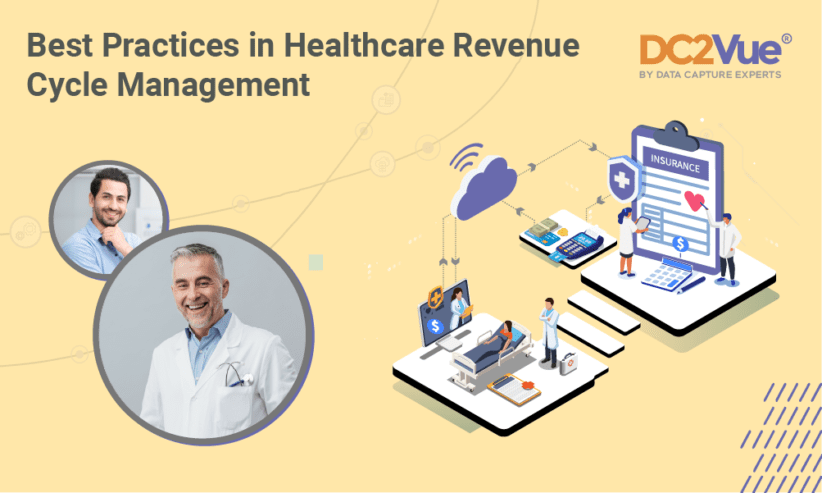(03) 9863 7644


Best Practices in Healthcare Revenue Cycle Management
Healthcare systems are generally bad at keeping track of patient revenue throughout the care journey. Disjointed systems, fragmented frameworks, and digital disorganisation make the task more challenging. Therefore, hospitals, clinics, and doctor's offices need to adopt healthcare revenue cycle best practices. But what are they, exactly? And how can you implement them? Thought leaders identify seven critical steps healthcare organisations must take to manage patient revenue cycles efficiently. The process begins with the first nosocomial interactions and ends when the healthcare provider receives payment in full.
There seven revenue cycle steps are as follows:
Pre-registration
Preregistration begins when medical practitioners capture patients’ demographic and eligibility information while on the phone and send it to a clearing house. You’ll want to collect the following:
-
Co-payment
-
Deductibles
-
Coverage
-
Referrals
-
Co-insurance
-
Premiums
You can then provide patients with financial expectations and tell them about your cancellation policy. You can also answer quick payment questions, helping patients avoid nasty surprises later. Setting expectations improves the patient experience and reduces the risk of no-pays later.
Registration
Registration is the next step. Here, you ensure all the patient information you have is correct. You will need to capture their:
-
Full legal name
-
Date of birth
-
Telephone number
-
Address
-
Insurance carrier
-
Guarantors
During this step, you ensure any referrals have the proper authorisations. This way, specialists will get paid. You also need to collect co-payments. Patients should sign financial forms and that insurers will meet their stated obligations. Make sure you have everything in writing.
Charge Capture
Charge capture refers to your system for collected payments. There are two ways to do this. You can either:
-
Automate payments by feeding patient data into practice management billing using digitised documentation
-
Get front desk staff to enter patient data manually and send it to the billing department
Both approaches run the risk of missing charges, particularly ancillary services. Work with a revenue cycle consultant if you struggle with this aspect of operations.
Claim Submission
The next step is claim submission. Here, you petition insurers to release funds to compensate for patient expenses. To reduce costs, insurers will ask for diagnostic information, CPT, and charges relating to procedures. As a provider, your task is to scrub claims – cleaning them so insurers can process them faster.
We suggest following a three-step process:
-
Collating claims in your practice management system
-
Forwarding claims to a clearinghouse
-
Interpreting the claims and sending them to different payers
Software should keep you apprised of your claims submission situation at all times. You should see your sent, returned and dropped claims and rejection reports showing code errors. Fixing errors helps you get paid faster.
Remittance Processing
Remittance processing is necessary after you receive payments from insurers. These will show you what you got paid for and the services provided.
You should see a list of “allowables.” These are permitted expenses the insurer negotiated with you at the contract signing. They detail how much carriers will pay for each service you provide and under what circumstances. Don’t fall into the trap of sending claims and not following them up. Always check remittances for omissions and non-payments. Don’t assume your insurer will agree to pay every time. Also, check your fee schedules regularly. Ensure they align with your real costs and permitted expenses. Allowables may change over time.
Lastly, pay contractual write-offs. Contractual write-offs are unavoidable. You have to pay carriers contracted rates. However, non-contractual write-offs are something you can change. Usually, they come about because you:
-
Fail to submit a claim on time
-
Do not have a referral on file
-
Lack of authorisation
Using software to deal with these issues and notify you of errors improves your processes.
Insurance Follow-Up
Insurance follow-up is the penultimate step of healthcare revenue cycle management. Here, you need to look at what you have paid and what you haven’t. Always inquire about the reasons for non-payment. Insurers may withhold remittances if they don’t have the correct information or if you broke the terms of your contract. They may also have made a mistake. When following up, ask whether you’ve assigned patients to the correct carriers.
Make sure you cross-train your team and check your accounts receivable for past-due payments. Also, check whether insurers are appealing claims. Any uptick could indicate an issue with your processes.
Patient Collections
The final step is patient collections. This part is usually the most challenging aspect of the process. Patients often delay payments, forcing you to follow up repeatedly. The best solution is to train receptionists to ask for payment at the time of service. This way, you can prevent your collections backlog from overwhelming your team.
You should also put a standard payments policy in place, outlining the consequences of failing to pay on time. Patients should be aware of interest charges and additional fees if they don’t pay on time. Co-payment and deductible collections best practices should be part of your organisational culture. Another strategy is to improve billing. Patients should receive statements every 30 days showing their current financial position. Sending out bills regularly can improve cash flow.
Conclusion
Healthcare reimbursement models are becoming increasingly complex. Insurance codes, diagnostic requirements and digital systems add complications to the process. Fortunately, healthcare billing software can help. This technology enables you to build robust revenue lifecycle management for regular and Medicare online claiming. It is often the difference between organisations that thrive and those that fail. Proper automation eliminates time-consuming and tedious tasks, letting providers focus on their core competencies.
DC2Vue’s flexible healthcare Service Management Framework (SMF) is a comprehensive solution to the revenue challenges most healthcare networks face. It offers Medicare billing, automated insurance claim processing and service provision, helping you achieve greater financial predictability and security. Contact us today to find out how we can help.





